Cotton Valley WRC (2024)
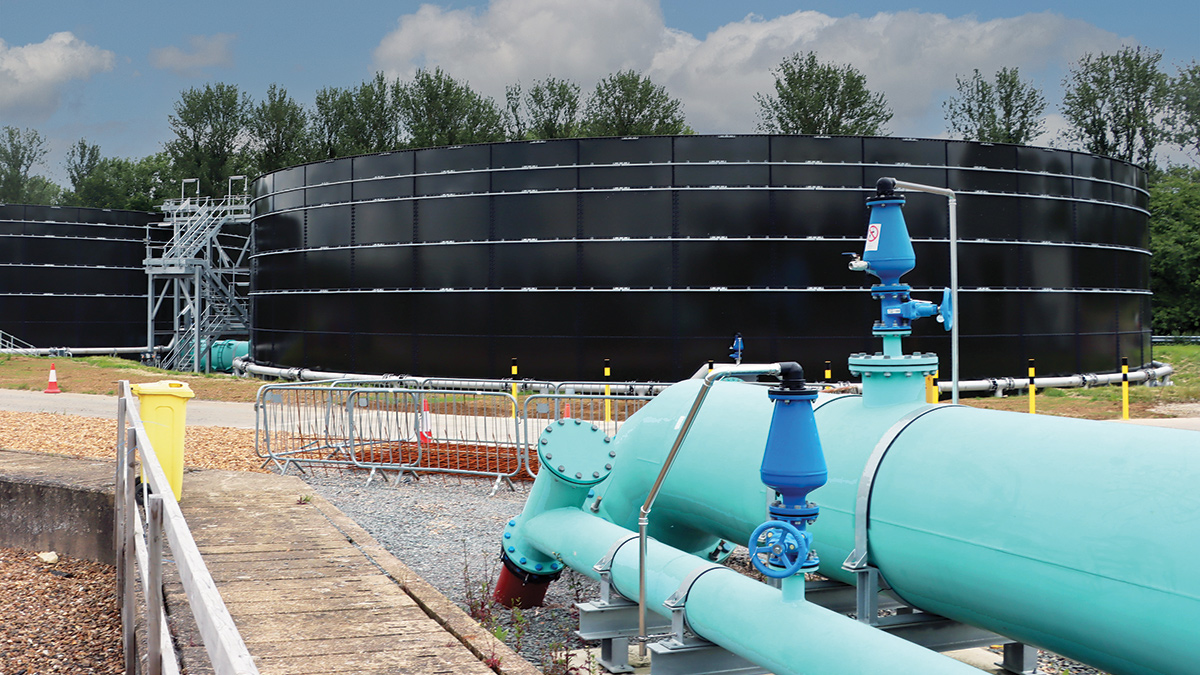
Glass-coated steel stormwater storage tanks - Courtesy of @one Alliance
Anglian Water’s Cotton Valley Water Recycling Centre treats flows from Milton Keynes and the surrounding area. The wastewater treatment facility in the Cotton Valley Catchment area serves a substantial population, treating wastewater to stringent regulatory standards before discharge. Over time, the facility has encountered various operational challenges that hindered its efficiency and compliance. These operational challenges included limitations in post-digestion dewatering capacity, recurring pollution incidents during high storm surges, the imposition of a stringent phosphorus standard, and inadequate stormwater storage capacity. Addressing these challenges became imperative to ensure the facility’s long-term sustainability and resilience.
Identified Issues
The Anglian Water @one Alliance was tasked with identifying the issues affecting the Cotton Valley WRC and finding and undertaking solution to address each issue. The identified issues were:
Post-digestion dewatering capacity: The existing centrifuges, crucial for dewatering sludge after digestion, operated below the previous AMP6 design throughput. This inefficiency results in inability to ensure treatment capacity and increased operational costs in alignment with the increase working capacity from the storm and TPS schemes. An AMP6 reinvestment scheme installed a third digester on site and increased the capacity of the Cambi plant from 56.6 TDS to 84 TDS.
The throughput is now 70 TDS and the post-digestion dewatering capacity is proving to be a bottleneck to unlocking this full capacity and imports to site have been restricted so that daily throughput does not exceed 60 TDS.
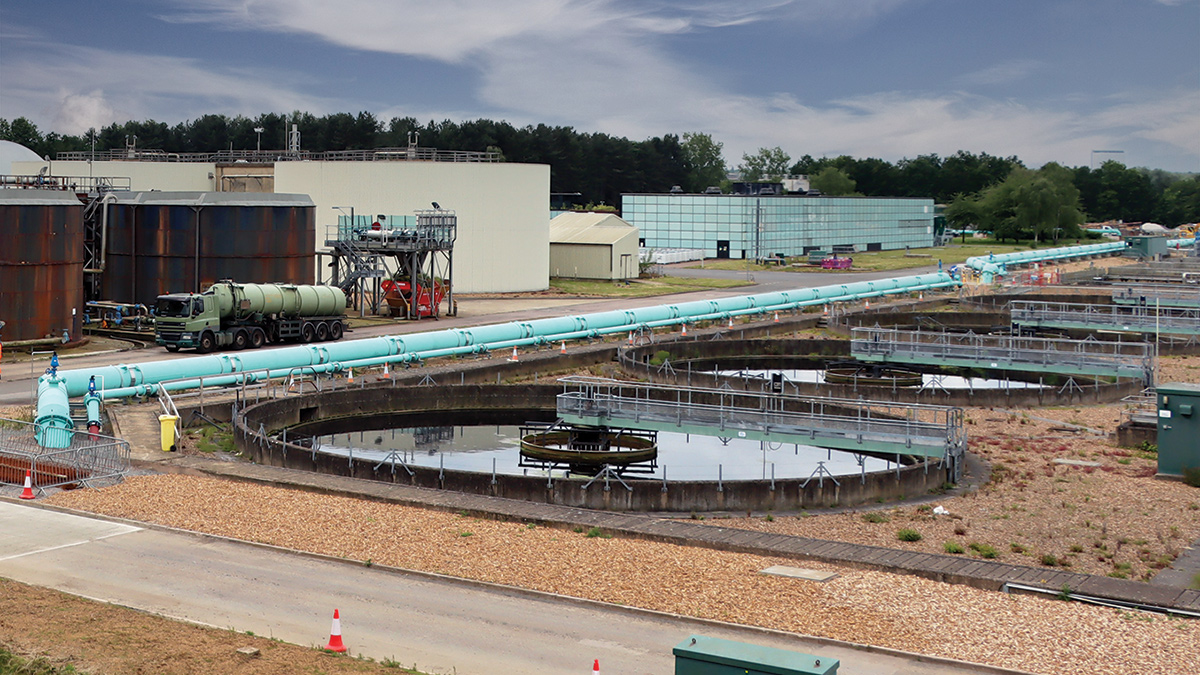
Terminal pumping station pipework to storm tanks – Courtesy of @one Alliance
Pollution incidents and stormwater management: In recent years, pollution incidents, particularly during high storm surges, posed significant environmental and regulatory concerns as the scrutiny of the water industry increases. Therefore, inadequate stormwater storage capacity and outdated pumping infrastructure has enhanced the impact of these incidents in the Milton Keynes area.
These persistent pollution incidents stem from the incoming flows received at the treatment plant station (TPS). Despite previous efforts under an AMP6 scheme, which included the installation of a bypass pipeline to accommodate a hired pump, these measures failed to prevent pollution events. The hired pumps were often unavailable and could not be delivered to the site promptly, leading to asset failure during critical periods.
These pollution events have a detrimental impact on the water quality leaving the WRC due to the treatment process being bypassed which is turn impacts the local environmental ecosystem.
Phosphorus standard compliance: A newly imposed phosphorus standard mandated a reduction in phosphorus levels to be discharged from the WRC. Prior to the new phosphorus investment, the existing chemical dosing infrastructure lacked the capacity to meet the stringent requirements of the new standard.
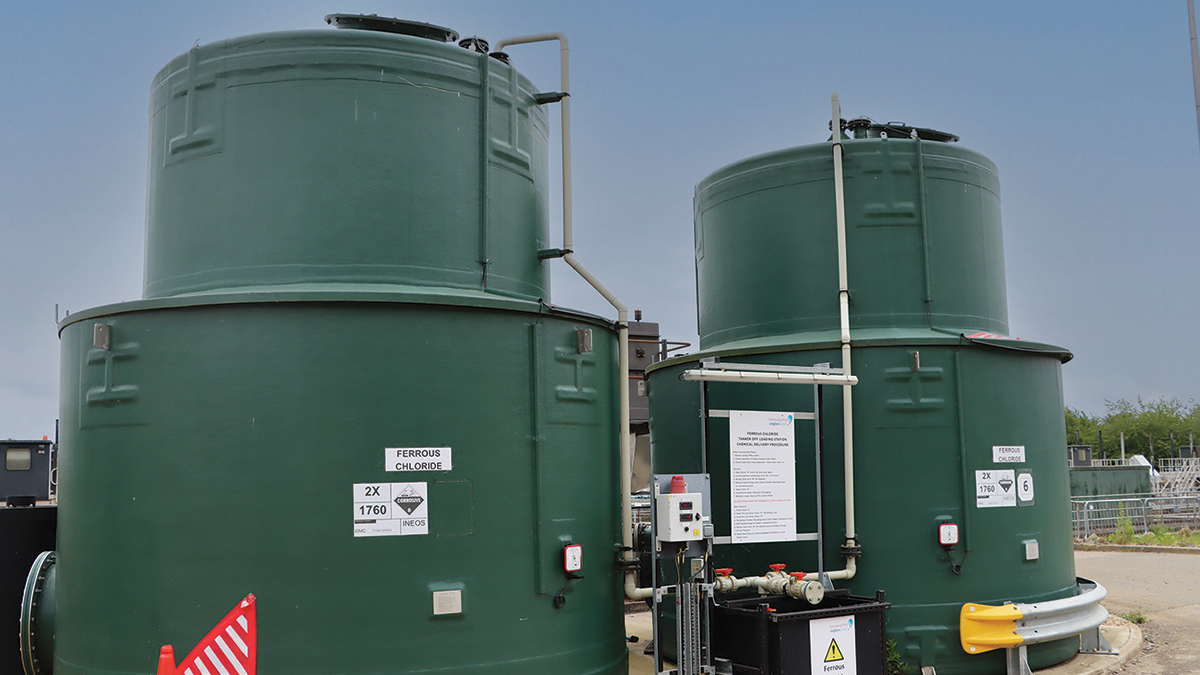
Phosphorus removal scheme – ferrous chloride storage tanks – Courtesy of @one Alliance
Cotton Valley WRC: Supply chain – key participants
- Principal contractor & designer: @one Alliance
- Mechanical installation above-ground pipework: Waveneys
- Electrical installation: Glasswell & Last
- Glass-coated steel storm tanks: Hayes GFS Ltd
- MEICA package: FSD Ltd
- Lagoon clearance: CSG
- Steelwork: Steelway Ltd
- Epoxy-coated pipework: Freeflow Pipesystems
- Chemical storage tank: EPS Water
- Screens: Huber Technology
- Transformers: Power Testing Ltd
- Pumps: Sulzer Pumps Wastewater Ltd
- Centrifuges: Alfa Laval Ltd
- Conveyor package: SPIRAC Ltd
- Poly dosing package: Richard Alan Engineering
- MCC, panel & kiosk: Paktronic Engineering Company Ltd
Proposed solutions
Due to the site’s issues, Anglian Water identified four schemes to be completed at Cotton Valley WRC with a total combined investment of £17m required. Starting in 2022, the @one Alliance initiated all four schemes in alignment with one another.
Digester upgrade scheme: As part of the digester scheme at Cotton Valley WRC, two new centrifuges were installed with enhanced dewatering capabilities to replace the current, outdated units. A modern conveyor system to streamline sludge transport and optimise operational efficiency was also part of the scope.
In addition, a new polymer dosing system was to be installed, including a dedicated polymer silo to improve sludge dewatering performance, and a new motor control center (MCC) within the existing infrastructure was required to facilitate centralised monitoring and control of the upgraded digester system.
Stormwater storage scheme: The biggest financial investment at Cotton Valley was the construction of the additional glass-coated steel stormwater storage tanks to increase the site’s working capacity. These new tanks will operate in parallel with, and overflow from Tank 4, to a new flow meter flume, connecting storm flows to the existing storm discharge chamber on site.
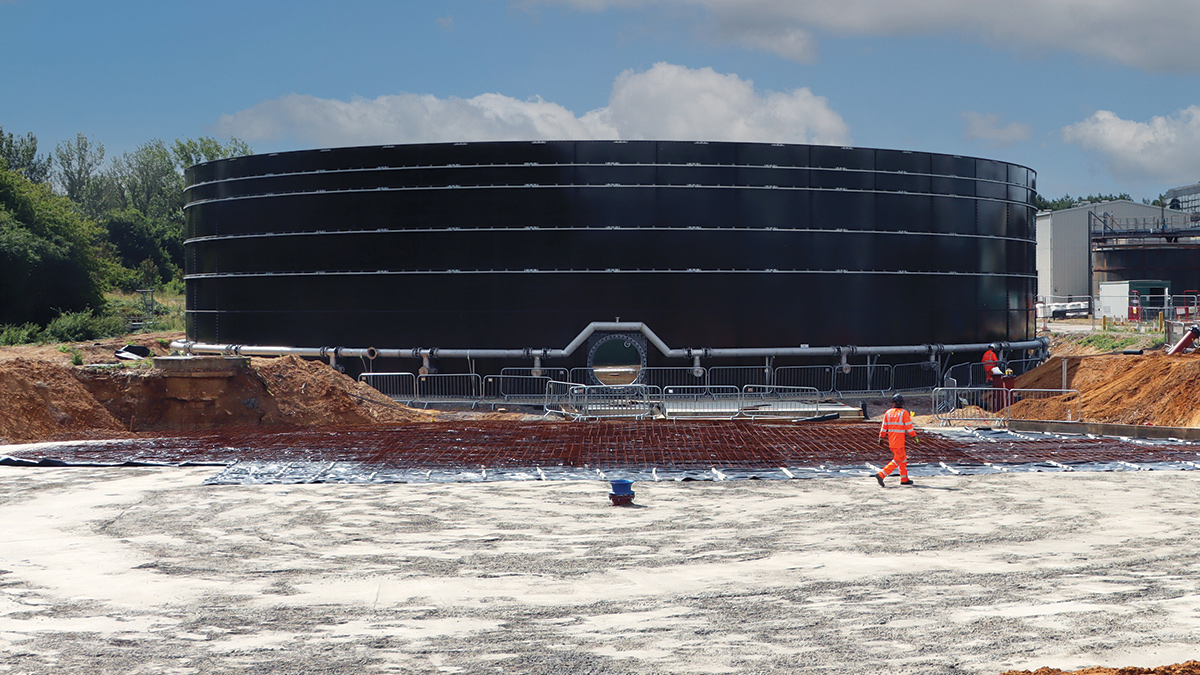
Construction of the two new storm tanks – Courtesy of @one Alliance
The existing working volume at Cotton Valley WRC was 5,795m3, however, the new Environment Agency requirement of having a working volume of 20,502m3, meant the storage capacity needed to be increased by 14,707m3. This would require the construction of two new tanks to accommodate peak storm surges and prevent future pollution incidents.
In addition, new side weir storm overflows and modulating penstocks to regulate stormwater flow and optimise management were installed. Advanced storm feed pumps and gravity collection system tanks to facilitate efficient stormwater transfer and storage during peak flows were also part of the project scope. Other elements of the stormwater storage upgrade included:
- A comprehensive cleaning and maintenance regime for the two new storm tanks, including the installation of nozzle cleaning systems for optimal performance.
- The installation of two new 1.25 MVa transformers based on 500 KVa for storm and 500 kVa for a future TPS inlet scheme with appropriate ancillaries and additional MCC units.
Phosphorus standard compliance: To comply with the new legislation, two 30m3 ferrous chloride storage tanks were installed, equipped with instrumentation for precise dosing control.
This element of the project also included:
- A new tanker delivery point and chamber to allow for chemical replenishment and ensure uninterrupted operation when required.
- A new kiosk.
- Ducts and draw pits to accommodate advanced chemical dosing equipment.
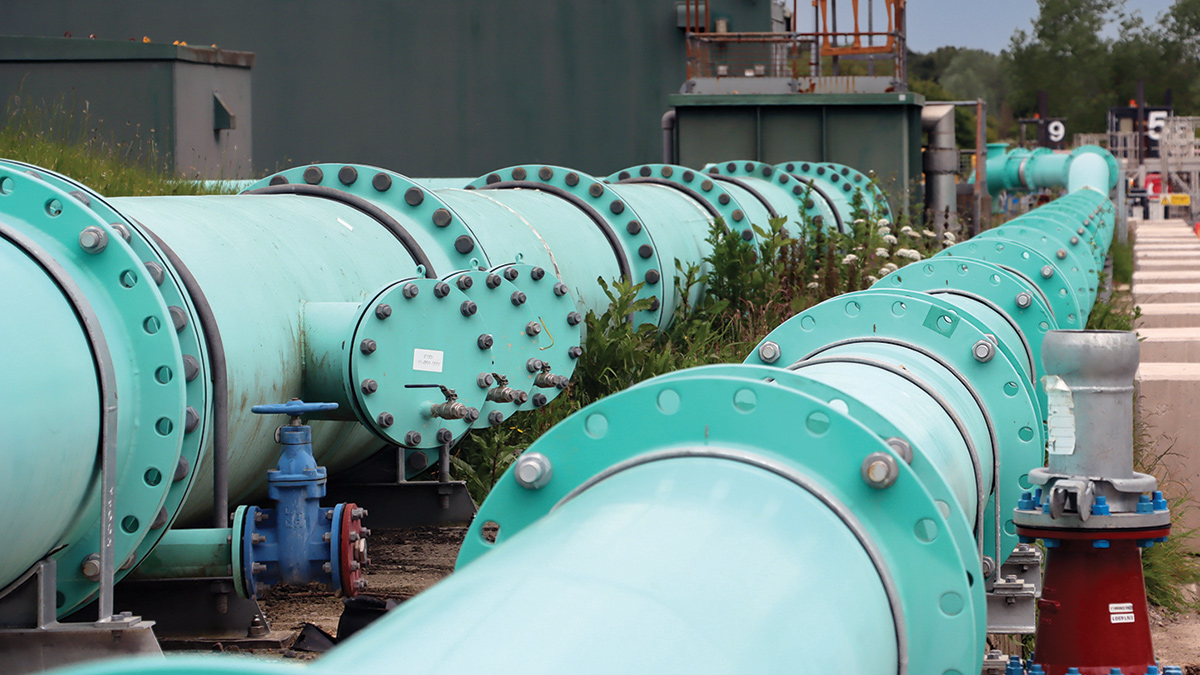
Terminal pumping station pipework to storm tanks – Courtesy of @one Alliance
Treatment plant station (TPS) resilience: To address the TPS issues, two duty/assist pumps with a capacity of 675 litres/second were installed in the TPS inlet well with automatic controls to operate the assist unit.
These pumps will be connected into the existing bypass pipework to ensure continuous operation during peak flows and emergencies.
Downstream pumps with a capacity of 550 l/s were also installed. These pumps were connected to a duty-only 12mm bar screen, which was essential for consent compliance. The discharge is directed into Storm Tank 1, providing additional capacity to manage excess flows during high storm surges.
An unscreened bypass was also installed to enhance the operational flexibility, with screenings directed into a 6.1m3 skip. A new MCert flow meter was also installed to monitor peak flow and screen performance, ensuring regulatory compliance.
Challenges & outcomes
There were a number of challenges that the @one Alliance and their supply chain had to overcome to successfully deliver the four schemes that made up the Cotton Valley WRC Upgrade Project.
- Clearance of the existing Cotton Valley lagoons to make way for the new storm tank installations led to an initial delay due to considerable additional material clearance that was required in order to achieve the necessary base foundations.
- The refurbishment of the TPS wet well, including installation of four additional pumps whilst the existing screw pump and wet well assets remained in operation was a considerable challenge. Not only were the works completely weather dependent resulting in numerous delays over the winter period, the works in the wet well were made up of multiple high-risk activities, requiring two cranes and a man-way basket for access together with a full-time emergency recovery team.
- The digester upgrade scheme required extensive design and coordination with multiple external package plant suppliers in order develop the overall solution required. With extended material and component lead-times being commonplace across the global supply chain, this led to challenges with the sequencing of the delivery programme.
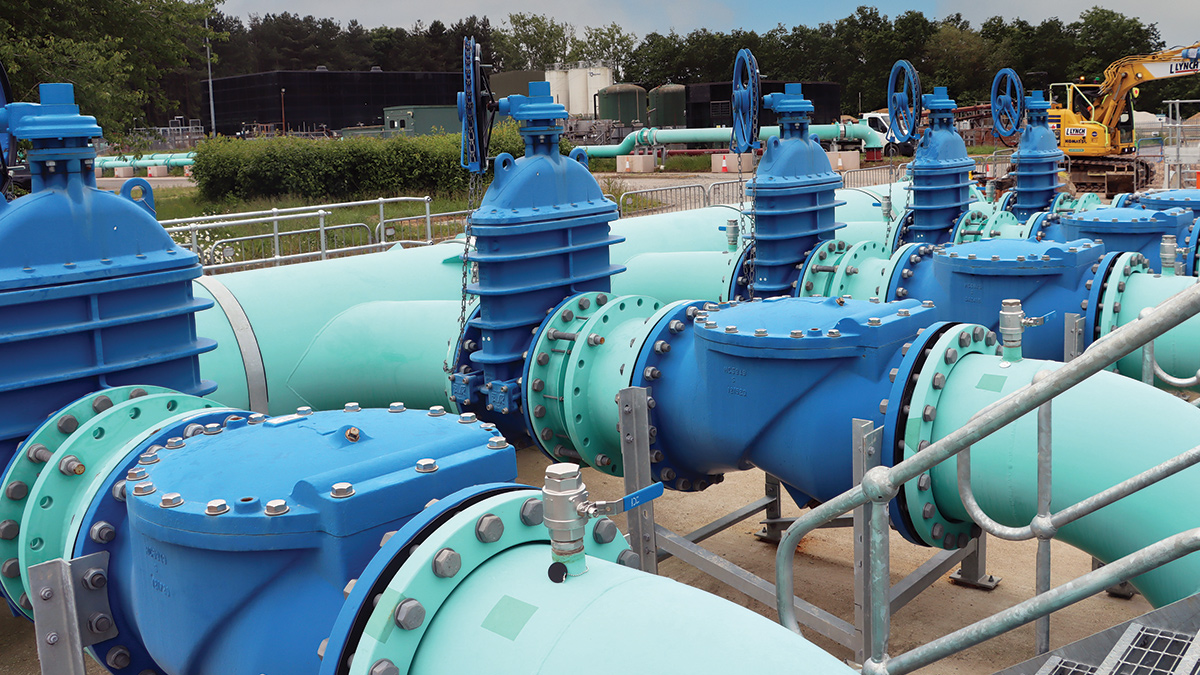
Terminal pumping station pipework – Courtesy of @one Alliance
Conclusion
The @one Alliance initiated a comprehensive £17m investment project spanning multiple phases to address operational challenges effectively.
At the time of writing (May 2024), the stormwater storage scheme and phosphorus removal schemes have been completed, whilst work on the digesters and the TPS elements continue.
Through proactive investment and strategic infrastructure upgrades, the wastewater treatment facility in the Cotton Valley catchment will be able to successfully address future operational challenges, and provide enhanced treatment capacity in order to maintain regulatory compliance.
This case study highlights the critical importance of continuous improvement and sustainable infrastructure investment in ensuring efficient wastewater treatment operations and safeguarding environmental health for future generations.
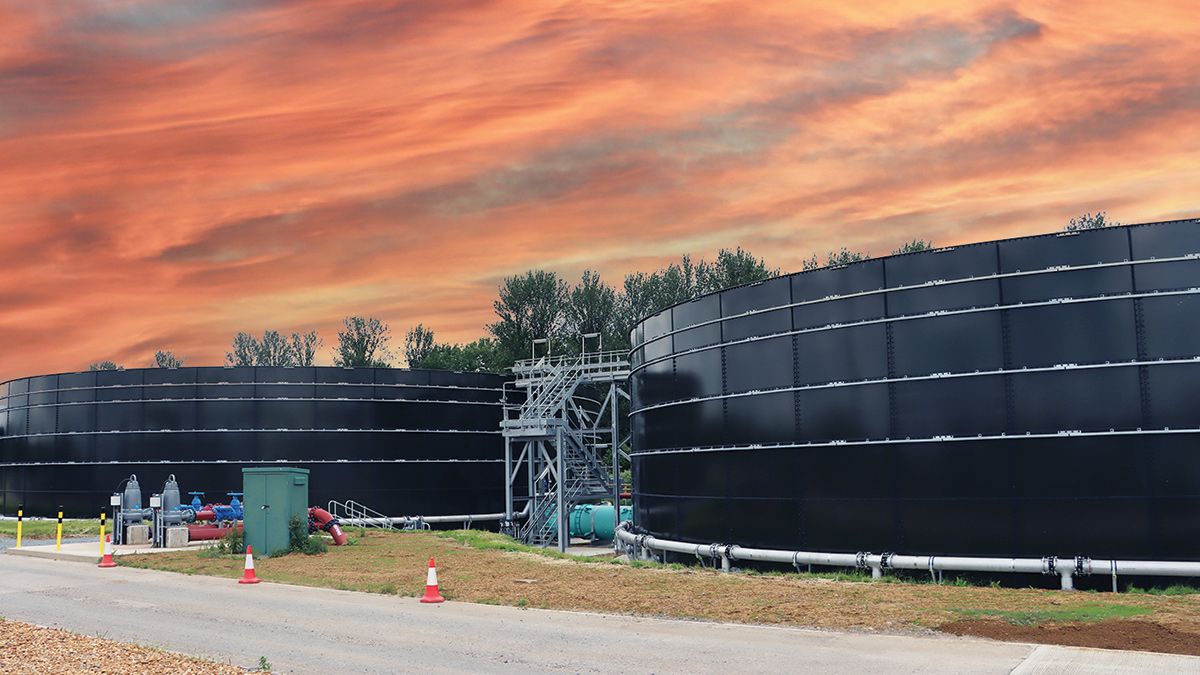
Completed storm tanks - Courtesy of @one Alliance






